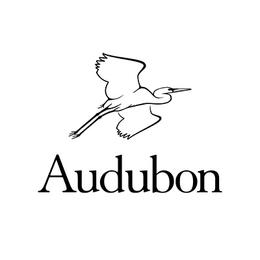LANDER, WYO. (July 24, 2019) – The US Bureau of Land Management is making a last-minute move to waive critical protections for non-eagle raptors as it prepares to finalize its approval of a massive 5,000 well oil and gas project in eastern Wyoming, one of the largest developments the state has ever seen.
Today, the Wyoming Outdoor Council and Audubon Rockies submitted joint comments on the Converse County Oil and Gas Project, which is currently being considered by the Bureau of Land Management (BLM). The Wyoming Outdoor Council and Audubon Rockies are asking the BLM to stick with its original plan to uphold science-based protections for raptors in eastern Wyoming.
In 2014, a group of energy companies proposed drilling 5,000 new oil and gas wells on 1.5 million acres of public and private land. The BLM is continuing its review of the proposal, which given its size and location, will have serious environmental impacts related to water, air, and wildlife. The latest in the review process is the Supplemental Draft Environmental Impact Statement, which focuses on proposals to dramatically weaken protections for non-eagle raptors.
As part of this review, Wyoming BLM announced earlier this year its intent to revise the Casper Resource Management Plan to remove nest buffer zones and timing restrictions — as the operators have asked. These protections are critical to minimizing the harmful effects of industrial development on raptors.
The project is in prime raptor habitat and overlaps the world-famous Thunder Basin National Grasslands. The waiver would apply to all non-eagle raptors, including several species that are considered “birds of conservation concern” by the U.S. Fish and Wildlife Service, and “species of greatest conservation need” by the Wyoming Game and Fish Department.
“The BLM started on the right foot by consulting with U.S. Fish and Wildlife Service to develop meaningful guidelines that would allow for development while conserving the many raptor species inhabiting the 1.5 million-acre project area,” Outdoor Council Conservation Advocate John Rader said. “Now the BLM wants to waive these science-based protections in favor of an alternative plan that would allow harmful disturbance near raptor nests and during nesting seasons. That means sensitive species like the Red-tailed Hawk, Ferruginous hawk, and Great Horned owl will come under extreme pressure as operators drill thousands of wells throughout their habitat.
“Wyoming Game and Fish has the authority and expertise to manage Wyoming wildlife, yet the BLM wants to cut them out of the process,” Rader added. “They should have the opportunity to review the BLM’s plan, and the BLM needs to be responsive to input from both Fish and Wildlife and Wyoming Game and Fish.”
Under several of the options that BLM is considering, BLM noted that when they consider removing non-eagle raptor nest protections, “impacts to nesting non-eagle raptors would be considered major, meaning the effects would be substantial and could be permanent in their effect on population or subpopulation survival, as effects would occur during key time periods such as breeding and nesting.”
“As we develop oil and gas resources, that doesn’t mean it should be done in a manner that disregards all the other values on the landscape,” said Brian Rutledge, Director of the Sagebrush Ecosystem Initiative for National Audubon Society. “The idea that BLM is considering dropping these important protections for non-eagle raptors is not only extremely concerning because it is so short-sighted, but goes against their own years of work with partner state and federal agencies.”
The groups are asking the BLM to keep the existing protections for raptors, which companies have successfully operated under for more than a decade. The BLM must provide strong, science-based protocols for raptor conservation, developed in consultation with Fish and Wildlife and reviewed by the Wyoming Game and Fish Department. So far, the BLM has not done so.
###
About Audubon Rockies
The National Audubon Society protects birds and the places they need, today and tomorrow. Audubon Rockies is the regional Audubon office for Colorado, Wyoming, and Utah. Audubon works throughout the Americas using science, advocacy, education, and on-the-ground conservation. State programs, nature centers, chapters, and partners give Audubon an unparalleled wingspan that reaches millions of people each year to inform, inspire, and unite diverse communities in conservation action. A nonprofit conservation organization since 1905, Audubon believes in a world in which people and wildlife thrive. Learn more at rockies.audubon.org and on Facebook, Twitter and Instagram @audubonrockies.
Media Contacts:
Brian Rutledge
Director, Sagebrush Ecosystem Initiative National Audubon Society/Audubon Rockies
(307) 262-1061
Dustin Bleizeffer
Communications Director
Wyoming Outdoor Council
(307) 267-3327







